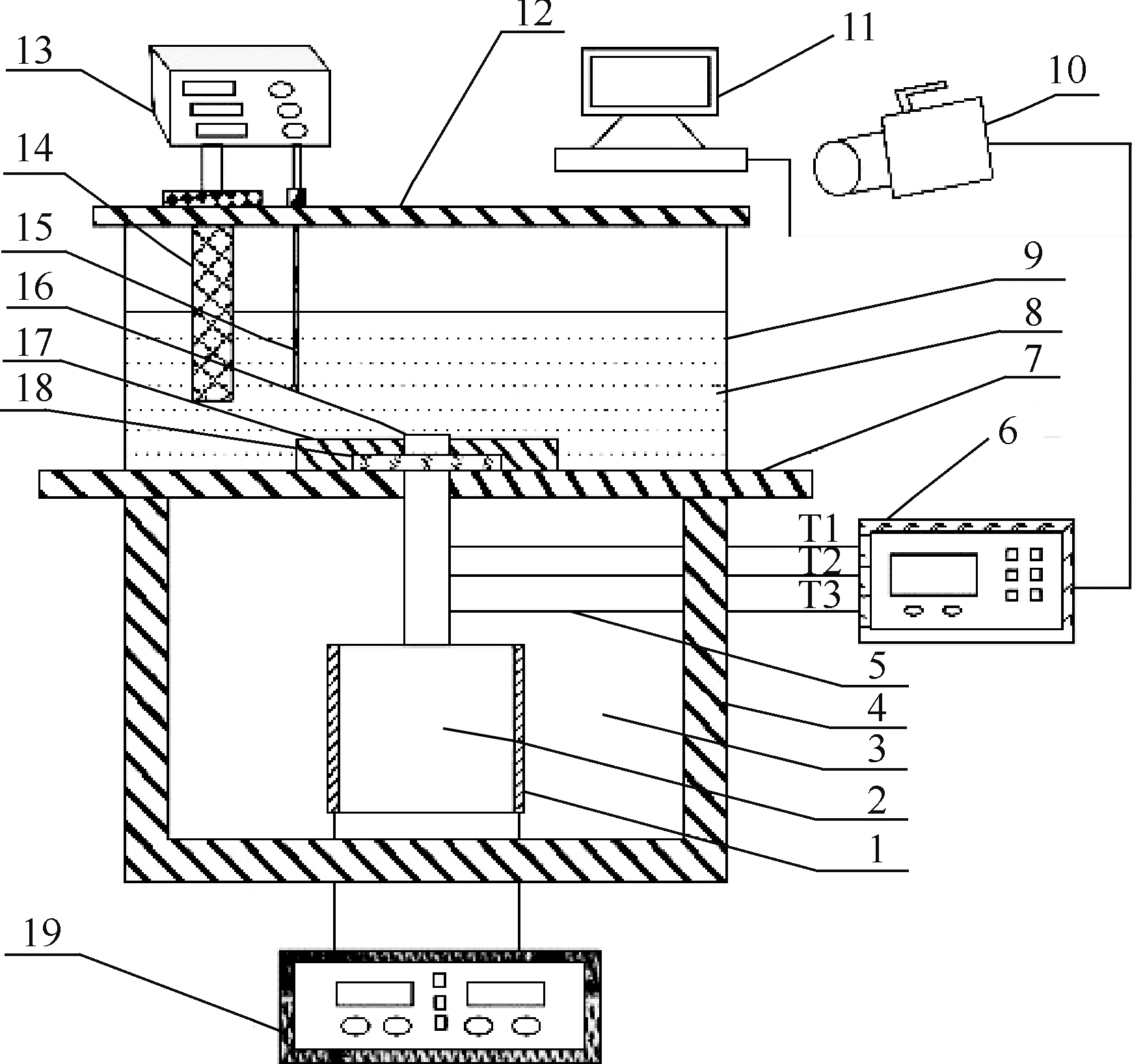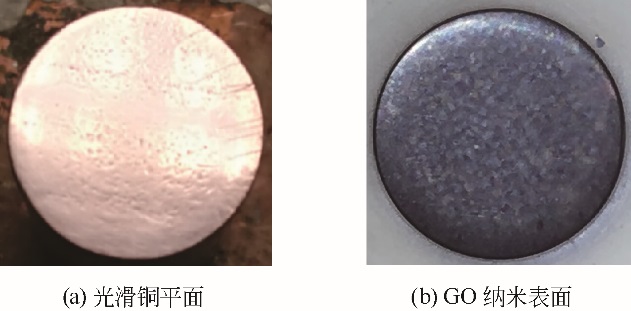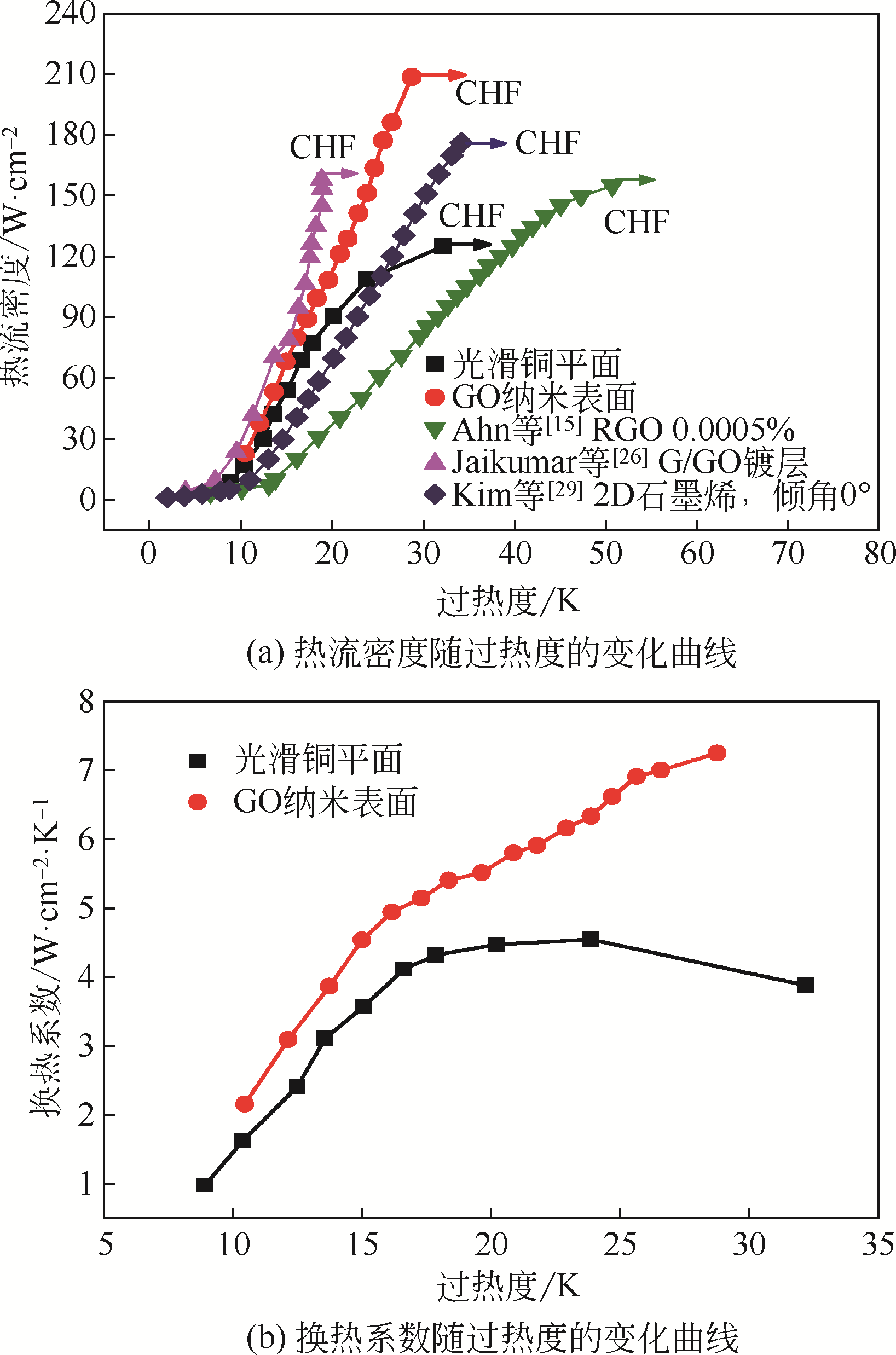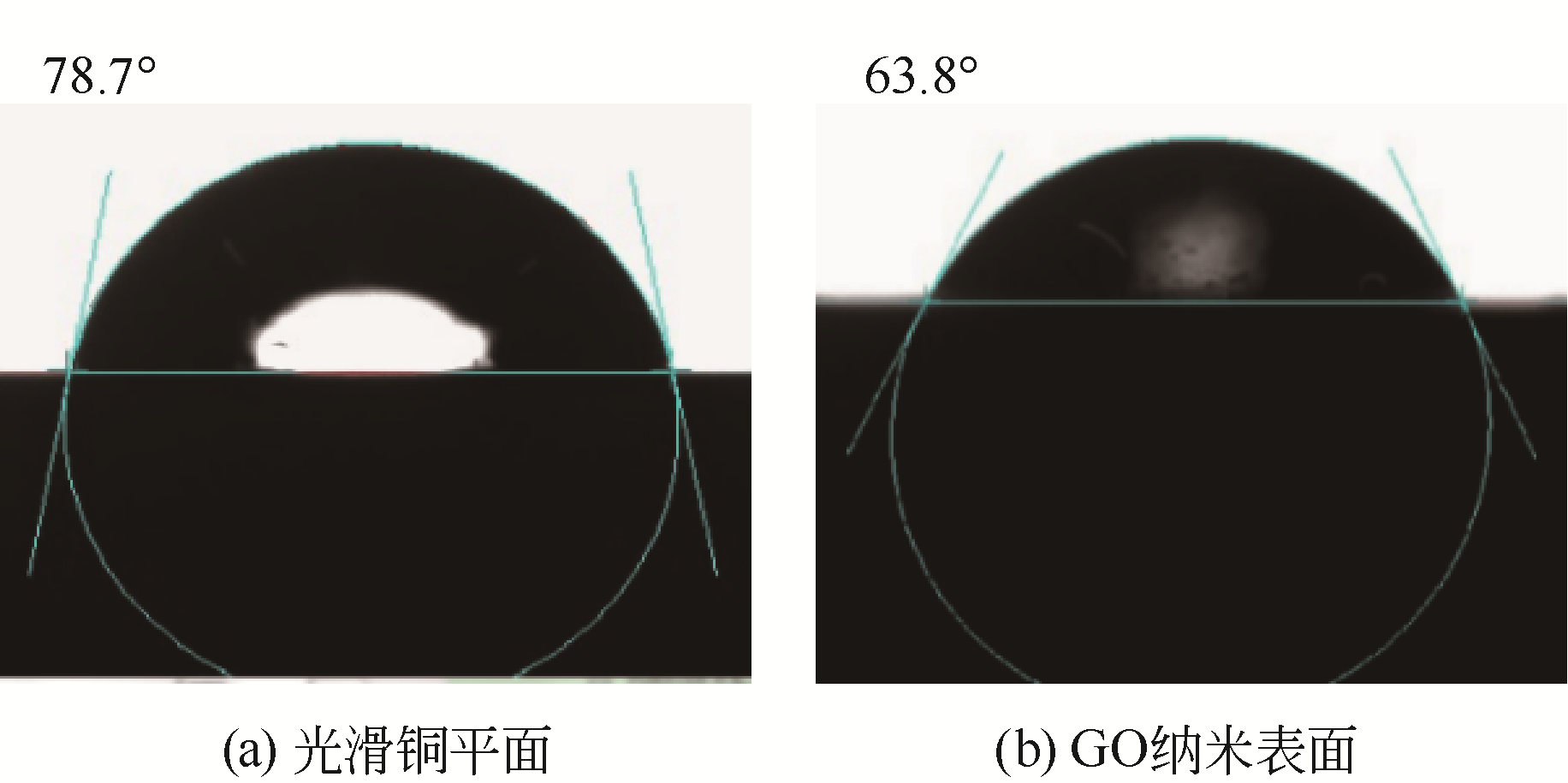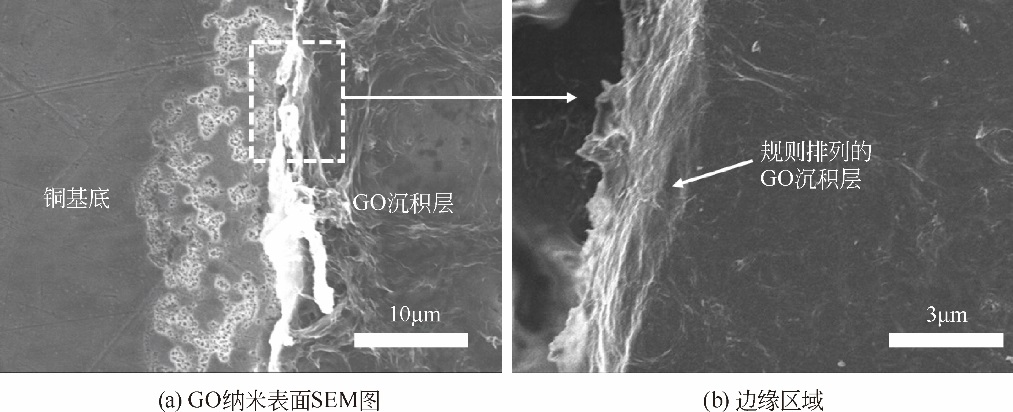Chemical Industry and Engineering Progress ›› 2019, Vol. 38 ›› Issue (9): 4164-4173.DOI: 10.16085/j.issn.1000-6613.2018-2398
• Materials science and technology • Previous Articles Next Articles
Enhanced pool boiling heat transfer performance on graphene oxide nanocoating surface
Lan MAO1,2( ),Wenbin ZHOU1(
),Wenbin ZHOU1( ),Xuegong HU1,2(
),Xuegong HU1,2( ),Yu HE1,2,Guiying ZHANG1,Long SHAN1
),Yu HE1,2,Guiying ZHANG1,Long SHAN1
- 1. Institute of Engineering Thermophysics, Chinese Academy of Sciences, Beijing 100190, China
2. University of Chinese Academy of Sciences, Beijing 100049, China
-
Received:2018-12-11Online:2019-09-05Published:2019-09-05 -
Contact:Wenbin ZHOU,Xuegong HU
氧化石墨烯表面的饱和池沸腾强化传热实验
毛兰1,2( ),周文斌1(
),周文斌1( ),胡学功1,2(
),胡学功1,2( ),何雨1,2,张桂英1,单龙1
),何雨1,2,张桂英1,单龙1
- 1. 中国科学院工程热物理研究所,北京 100190
2. 中国科学院大学,北京 100049
-
通讯作者:周文斌,胡学功 -
作者简介:毛兰(1993—),女,博士研究生,研究方向为微纳尺度传热学。E-mail:maolan@iet.cn 。 -
基金资助:国家重点研发计划(2017YFB0403200)
CLC Number:
Cite this article
Lan MAO,Wenbin ZHOU,Xuegong HU,Yu HE,Guiying ZHANG,Long SHAN. Enhanced pool boiling heat transfer performance on graphene oxide nanocoating surface[J]. Chemical Industry and Engineering Progress, 2019, 38(9): 4164-4173.
毛兰,周文斌,胡学功,何雨,张桂英,单龙. 氧化石墨烯表面的饱和池沸腾强化传热实验[J]. 化工进展, 2019, 38(9): 4164-4173.
share this article
Add to citation manager EndNote|Ris|BibTeX
URL: https://hgjz.cip.com.cn/EN/10.16085/j.issn.1000-6613.2018-2398
| 实验参数 | 最大不确定度 |
|---|---|
| T 1 、T 2 、T 3 | ±0.2K |
| t 0 、t 1 、t 2 | ±0.01mm |
| q″ | 4.6% |
| h | 6.5% |
| 实验参数 | 最大不确定度 |
|---|---|
| T 1 、T 2 、T 3 | ±0.2K |
| t 0 、t 1 、t 2 | ±0.01mm |
| q″ | 4.6% |
| h | 6.5% |
| 26 | JAIKUMAR A , GUPTA A , KANDLIKAR S G , et al . Scale effects of graphene and graphene oxide coatings on pool boiling enhancement mechanisms[J]. International Journal of Heat and Mass Transfer, 2017, 109: 357-366. |
| 27 | ZUBER N . Hydrodynamic aspects of boiling heat transfer[D].Los Angeles: University of California, 1959. |
| 28 | ROHSENOW W . A method of correlating heat-transfer data for surface boiling of liquids[M]. Cambridge : M.I.T. Division of Industrial Cooporation, 1951, 74. |
| 29 | KIM T , KIM J M , KIM J H , et al . Orientation effects on bubble dynamics and nucleate pool boiling heat transfer of graphene-modified surface[J]. International Journal of Heat and Mass Transfer, 2017, 108: 1393-1405. |
| 30 | KIM K M , BANG I C . Effects of graphene oxide nanofluids on heat pipe performance and capillary limits[J]. International Journal of Thermal Sciences, 2016, 100: 346-356. |
| 31 | KIM J H , KIM J M , JERNG D W , et al . Effect of aluminum oxide and reduced graphene oxide mixtures on critical heat flux enhancement[J]. International Journal of Heat and Mass Transfer, 2018, 116: 858-870. |
| 32 | 张伟, 牛志愿, 李亚, 等 . 石墨烯/镍复合微结构表面的池沸腾传热特性[J]. 化工进展, 2018, 37(10): 3759-3764. |
| ZHANG W , NIU Z Y , LI Y ,et al . Pool boiling heat transfer characteristics on graphene/nickel composite microstructures[J]. Chemical Industry and Engineering Progress, 2018, 37(10): 3759-3764. | |
| 33 | THEOFANOUS T G , DINH T N , TU J P , et al . The boiling crisis phenomenon - part II: Dryout dynamics and burnout[J]. Experimental Thermal and Fluid Science, 2002, 26(6/7): 793-810. |
| 34 | KIM S J , BANG I C , BUONGIORNO J , et al . Effects of nanoparticle deposition on surface wettability influencing boiling heat transfer in nanofluids[J]. Applied Physics Letters, 2006, 89(15): 153107. |
| 35 | SADASIVAN P , CHAPPIDI P R , UNAL C , et al . Possible mechanisms of macrolayer formation[J]. International Communications in Heat and Mass Transfer, 1992, 19(6): 801-815. |
| 36 | WANG C H , DHIR V K . Effect of surface wettability on active nucleation density during pool boiling of water on a vertical surface[J]. Journal of Heat Transfer-Transactions of the Asme, 1993, 115(3): 659-669. |
| 1 | GOLOBIC I , PETKOVSEK J , KENNING D B R . Bubble growth and horizontal coalescence in saturated pool boiling on a titanium foil, investigated by high-speed ir thermography[J]. International Journal of Heat and Mass Transfer, 2012, 55(4): 1385-1402. |
| 2 | MCHALE J P , GARIMELLA S V . Bubble nucleation characteristics in pool boiling of a wetting liquid on smooth and rough surfaces[J]. International Journal of Multiphase Flow, 2010, 36(4): 249-260. |
| 37 | AHN H S, KIM J M , KIM T , et al . Enhanced heat transfer is dependent on thickness of graphene films: the heat dissipation during boiling[J]. Sci. Rep., 2014, 4: 6276. |
| 38 | ARIK M , BAR-COHEN A . Effusivity-based correlation of surface property effects in pool boiling CHF of dielectric liquids[J]. International Journal of Heat and Mass Transfer, 2003, 46(20): 3755-3764. |
| 39 | ANDRIKOPOULOS K S , BOUNOS G , TASIS D , et al . The effect of thermal reduction on the water vapor permeation in graphene oxide membranes[J]. Advanced Materials Interfaces, 2014, 1(8): 082402-082410. |
| 40 | KIM J M , KIM J H , KIM M H , et al . Nanocapillarity in graphene oxide laminate and its effect on critical heat flux[J]. Journal of Heat Transfer-Transactions of the ASME, 2017, 139(8): 082402-082410. |
| 3 | MICHAIE S , RULLIèRE R , BONJOUR J . Experimental study of bubble dynamics of isolated bubbles in water pool boiling at subatmospheric pressures[J]. Experimental Thermal and Fluid Science, 2017, 87: 117-128. |
| 4 | MINSEOK H , GRAHAM S . Pool boiling characteristics and critical heat flux mechanisms of microporous surfaces and enhancement through structural modification[J]. Applied Physics Letters, 2017, 111(9): 091601. |
| 5 | KAMATCHI R . Experimental investigations on nucleate boiling heat transfer of aqua-based reduced graphene oxide nanofluids[J]. Heat and Mass Transfer, 2017, 54(2): 437-451. |
| 6 | FORSTER H K , ZUBER N . Dynamics of vapor bubbles and boiling heat transfer[J]. AIChE Journal, 1955, 1(4): 531-535. |
| 7 | KANDLIKAR S G . A theoretical model to predict pool boiling CHF incorporating effects of contact angle and orientation[J]. Journal of Heat Transfer-Transactions of the Asme, 2001, 123(6): 1071-1079. |
| 8 | ZHAO Y H , MASUOKA T , TSURUTA T . Unified theoretical prediction of fully developed nucleate boiling and critical heat flux based on a dynamic microlayer model[J]. International Journal of Heat and Mass Transfer, 2002, 45(15): 3189-3197. |
| 9 | ZHANG Y , ZHOU J , ZHOU W , et al . CHF correlation of boiling in FC-72 with micro-pin-fins for electronics cooling[J]. Applied Thermal Engineering, 2018, 138: 494-500. |
| 10 | CAO Z , LIU B , PREGER C , et al . Pool boiling heat transfer of FC-72 on pin-fin silicon surfaces with nanoparticle deposition[J]. International Journal of Heat and Mass Transfer, 2018, 126: 1019-1033. |
| 11 | AHN H S, LEE C, KIM H , et al . Pool boiling CHF enhancement by micro/nanoscale modification of zircaloy-4 surface[J]. Nuclear Engineering and Design, 2010, 240(10): 3350-3360. |
| 12 | 莫冬传, 张晖, 吕树申 . TiO2纳米管阵列表面的池沸腾实验[J]. 化工学报, 2014, 65 (s1): 308-315. |
| MO D C , ZHANG H , LU S S . Pool boiling experiment on TiO2 nanotube array surface[J]. CIESC Journal, 2014, 65 (s1): 308-315. | |
| 13 | JANG W , CHEN Z , BAO W , et al . Thickness-dependent thermal conductivity of encased graphene and ultrathin graphite[J]. Nano Letters, 2010, 10(10): 3909-3913. |
| 14 | AHN H S, KIM J M , KAVIANY M , et al . Pool boiling experiments in reduced graphene oxide colloids. Part I - boiling characteristics[J]. International Journal of Heat and Mass Transfer, 2014, 74: 501-512. |
| 15 | AHN H S, KIM J M , KAVIANY M , et al . Pool boiling experiments in reduced graphene oxide colloids part II - behavior after the chf, and boiling hysteresis[J]. International Journal of Heat and Mass Transfer, 2014, 78: 224-231. |
| 16 | AHN H S, KIM J M , KIM M H . Experimental study of the effect of a reduced graphene oxide coating on critical heat flux enhancement[J]. International Journal of Heat and Mass Transfer, 2013, 60: 763-771. |
| 17 | SEO H, CHU J H , KWON S Y , et al . Pool boiling CHF of reduced graphene oxide, graphene, and SiC-coated surfaces under highly wettable FC-72[J]. International Journal of Heat and Mass Transfer, 2015, 82: 490-502. |
| 18 | SEO H, YUN H D , KWON S Y , et al . Hybrid graphene and single-walled carbon nanotube films for enhanced phase-change heat transfer[J]. Nano Letters, 2016, 16(2): 932-938. |
| 19 | KUANG D , XU L , LIU L , et al . Graphene-nickel composites[J]. Applied Surface Science, 2013, 273: 484-490. |
| 20 | AN S , KIM D-Y , J-G LEE , et al . Supersonically sprayed reduced graphene oxide film to enhance critical heat flux in pool boiling[J]. International Journal of Heat and Mass Transfer, 2016, 98: 124-130. |
| 21 | PARK S S , KIM Y H , JEON Y H , et al . Effects of spray-deposited oxidized multi-wall carbon nanotubes and graphene on pool-boiling critical heat flux enhancement[J]. Journal of Industrial and Engineering Chemistry, 2015, 24: 276-283. |
| 22 | PARK S D , LEE S W, KANG S , et al . Effects of nanofluids containing graphene/graphene-oxide nanosheets on critical heat flux[J]. Applied Physics Letters, 2010, 97(2): 023103. |
| 23 | SINGH E , CHEN Z , HOUSHMAND F , et al . Superhydrophobic graphene foams[J]. Small, 2013, 9(1): 75-80. |
| 24 | KIM J M , KIM J H , PARK S C , et al . Nucleate boiling in graphene oxide colloids: morphological change and critical heat flux enhancement[J]. International Journal of Multiphase Flow, 2016, 85: 209-222. |
| 25 | KIM J M , KIM T , KIM J , et al . Effect of a graphene oxide coating layer on critical heat flux enhancement under pool boiling[J]. International Journal of Heat and Mass Transfer, 2014, 77: 919-927. |
| 41 | 刁彦华, 赵耀华, 王秋良 . R-113池沸腾气泡行为的可视化及传热机理[J]. 化工学报, 2005, 56(2): 227-234. |
| DIAO Y H , ZHAO Y H , WANG Q L . Bubble dynamics and heat transfer mechanism of pool boiling of R-113[J]. CIESC Journal, 2005, 56(2): 227-234. |
| [1] | HU Xi, WANG Mingshan, LI Enzhi, HUANG Siming, CHEN Junchen, GUO Bingshu, YU Bo, MA Zhiyuan, LI Xing. Research progress on preparation and sodium storage properties of tungsten disulfide composites [J]. Chemical Industry and Engineering Progress, 2023, 42(S1): 344-355. |
| [2] | XU Chunshu, YAO Qingda, LIANG Yongxian, ZHOU Hualong. Research progress on functionalization strategies of covalent organic frame materials and its adsorption properties for Hg(Ⅱ) and Cr(Ⅵ) [J]. Chemical Industry and Engineering Progress, 2023, 42(S1): 461-478. |
| [3] | XU Ruosi, TAN Wei. Flow field simulation and fluid-structure coupling analysis of C-tube pool boiling two-phase flow model [J]. Chemical Industry and Engineering Progress, 2023, 42(S1): 47-55. |
| [4] | XIAO Hui, ZHANG Xianjun, LAN Zhike, WANG Suhao, WANG Sheng. Advances in flow and heat transfer research of liquid metal flowing across tube bundles [J]. Chemical Industry and Engineering Progress, 2023, 42(S1): 10-20. |
| [5] | WANG Tai, SU Shuo, LI Shengrui, MA Xiaolong, LIU Chuntao. Dynamic behavior of single bubble attached to the solid wall in the AC electric field [J]. Chemical Industry and Engineering Progress, 2023, 42(S1): 133-141. |
| [6] | SHENG Weiwu, CHENG Yongpan, CHEN Qiang, LI Xiaoting, WEI Jia, LI Linge, CHEN Xianfeng. Operating condition analysis of the microbubble and microdroplet dual-enhanced desulfurization reactor [J]. Chemical Industry and Engineering Progress, 2023, 42(S1): 142-147. |
| [7] | ZHAO Chen, MIAO Tianze, ZHANG Chaoyang, HONG Fangjun, WANG Dahai. Heat transfer characteristics of ethylene glycol aqueous solution in slit channel under negative pressure [J]. Chemical Industry and Engineering Progress, 2023, 42(S1): 148-157. |
| [8] | YANG Hanyue, KONG Lingzhen, CHEN Jiaqing, SUN Huan, SONG Jiakai, WANG Sicheng, KONG Biao. Decarbonization performance of downflow tubular gas-liquid contactor of microbubble-type [J]. Chemical Industry and Engineering Progress, 2023, 42(S1): 197-204. |
| [9] | CHEN Lin, XU Peiyuan, ZHANG Xiaohui, CHEN Jie, XU Zhenjun, CHEN Jiaxiang, MI Xiaoguang, FENG Yongchang, MEI Deqing. Investigation on the LNG mixed refrigerant flow and heat transfer characteristics in coil-wounded heat exchanger (CWHE) system [J]. Chemical Industry and Engineering Progress, 2023, 42(9): 4496-4503. |
| [10] | ZHANG Fan, TAO Shaohui, CHEN Yushi, XIANG Shuguang. Initializing distillation column simulation based on the improved constant heat transport model [J]. Chemical Industry and Engineering Progress, 2023, 42(9): 4550-4558. |
| [11] | SHI Yu, ZHAO Yunchao, FAN Zhixuan, JIANG Dahua. Experimental study on the optimum phase change temperature of phase change roofs in hot summer and cold winter areas [J]. Chemical Industry and Engineering Progress, 2023, 42(9): 4828-4836. |
| [12] | BU Zhicheng, JIAO Bo, LIN Haihua, SUN Hongyuan. Review on computational fluid dynamics (CFD) simulation and advances in pulsating heat pipes [J]. Chemical Industry and Engineering Progress, 2023, 42(8): 4167-4181. |
| [13] | ZHANG Chao, YANG Peng, LIU Guanglin, ZHAO Wei, YANG Xufei, ZHANG Wei, YU Bo. Influence of surface microstructure on arrayed microjet flow boiling heat transfer [J]. Chemical Industry and Engineering Progress, 2023, 42(8): 4193-4203. |
| [14] | WANG Jiansheng, ZHANG Huipeng, LIU Xueling, FU Yuguo, ZHU Jianxiao. Analysis of flow and heat transfer characteristics in porous media reservoir [J]. Chemical Industry and Engineering Progress, 2023, 42(8): 4212-4220. |
| [15] | WANG Yungang, JIAO Jian, DENG Shifeng, ZHAO Qinxin, SHAO Huaishuang. Experimental analysis of condensation heat transfer and synergistic desulfurization [J]. Chemical Industry and Engineering Progress, 2023, 42(8): 4230-4237. |
| Viewed | ||||||
|
Full text |
|
|||||
|
Abstract |
|
|||||
